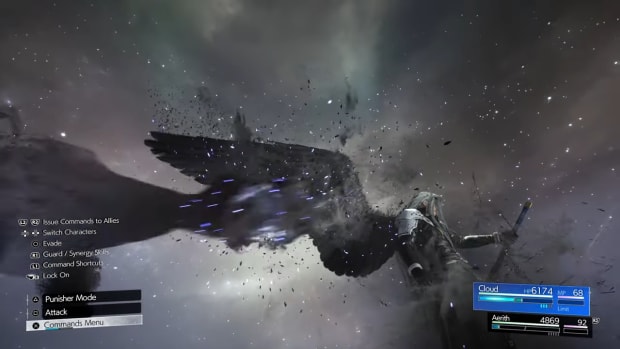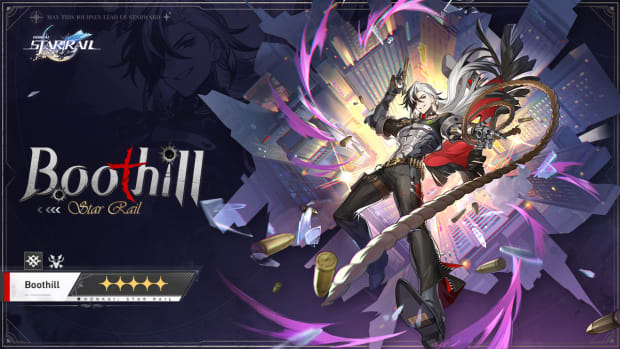Assassin’s Creed Mirage hands-on impressions: nailing the original assassin fantasy
9th-century Baghdad. It’s not the most imaginative choice for an Assassin’s Creed game given that’s more or less where the first one happened, but after four hours with Assassin’s Creed Mirage, it’s looking like the right one.
With each installment of Ubisoft’s long-running stealth-action series stuffing it with mythical beasts to slay, swathes of land to cross, and a procession of far-fetched cameos from unlikely historical figures, this is a welcome return to roots - the closest you can get to playing a modernized version of the 2007 original without using the word ‘remake’.
For example, it’s set in the Middle East just like the first Assassin’s Creed game 16 years ago, albeit two centuries prior in a more optimistic Golden Age of culture and commerce. Added to that, the impetus is once again on avoiding conflict, tailing targets, and taking them out with lethal precision. There’s even the option of playing with a desaturated filter harking back to 2007’s washed-out color palette, which pairs well with the unlockable Altair costume.
But Mirage tells a new story. Here, for the first time, you play as Basim, the Iranian assassin from 2019’s Valhalla. Where in that game he was a fully-fledged murder master, Mirage is an origin story following his journey from unsure street thief to respected bureau leader. That means you’ll be working your way up.
Starting with nothing but a whistle to coax guards into shadowy corners and a blunt sword that could be bested by a butter knife, you’ll slowly gain access to an array of tools giving you fresh options. There’s a smoke bomb that disorientates enemies, a noisemaker beckoning them to investigate, poison blow darts, and deadly throwing knives. You can upgrade them all, too: knives might be dipped in acid to dissolve bodies and avoid discovery, while smoke bombs could be turned flammable when ignited with your torch.
If these tools sound familiar, it’s because they are. Players have put them to use in past Assassin’s Creed games, just as they’ve enabled Eagle Vision to highlight objects of interest, torn through bustling streets on horseback, and taken flight as a bird who can tag patrolling hostiles like a feathery drone. Mirage has more or less exactly the same pieces as its predecessors. What’s changed is how Ubisoft assembles them.
Take the world design. In a dense urban sprawl, stealth is key. A canopy of flat rooftops facilitates speedy navigation, narrow streets are begging to be bound between, and disappearing from sight simply requires you to slip into the crowd.
Parkour is mostly unchanged, with Basim using Ubisoft’s bank of animations built up over a 16-year history. You’ll swing round corners on hanging pots, rappel up walls by slicing winch ropes, and zoom down conveniently placed zip lines. While there’s little thrill or novelty in it now, with movement merely a means to an end, it’s still an effective way to scout hostile zones and work out your optimal approach.
This, combined with ultra-punishing combat that disincentivizes embroiling yourself in big brawls by turning you into a glass cannon, makes Mirage the stealthiest game in the series’ history. Raise attention by having scraps all over town and your three-star wanted meter rises, with concerned citizens reporting your actions to the authorities. Max out the meter and an almost unstoppable elite enemy is dispatched, the equivalent of a 9th-century Terminator. You’ll need to rip down ‘wanted’ posters and lay low to quell the disruption.
In fact, stealth is so effective in Mirage that it makes going loud almost completely unviable. Missions are built to be ghosted through like a phantom as you strike from long grass, drop silently through skylights, and shoot blow darts into necks before rifling through documents for clues to the mission’s next step.
It’s made fairer thanks to icons establishing enemy alert levels, last-known-position markers, and an upgrade letting you see the lines of sight, and made deeper with the element of recruitable distractions. A group of mercenaries will gladly pick a fight with patrolling guards while you waltz in undetected - if you have the coin. Again, it’s nothing new. Outpost assaults play similarly to previous series entries, but they’re smaller, faster, and laser-focused.
There are more than outposts in Mirage, however. Other missions involve escorting companions, eavesdropping on conversations, or shadowing shady figures through crowded markets. The game’s overall mission structure as found in the menu resembles a detective’s board, with a web of targets linked by threads. Your aim is to uncover clues leading to these targets.
For instance, you’ve got wind of a seedy harbor master. To find him, you could prowl the river bank on the hunt for his hideout, which you’re pointed in the general direction of. Or you could skip time by paying off an informant who’ll send you right to him. The harbourmaster’s camp has intel on a crime boss, which leads you to the next mission. It makes Mirage feel more like a procedural investigation as you work to uncover pieces of the wider conspiracy.
Each chapter ends with a Black Box mission in which you take out a key target. These are Mirage highlights. The Black Box mission we play takes place in a bustling bazaar filled with life and color. Traders sell vast bowls of spices, twinkling brass trinkets, and, a Ubisoft rep teases, wooden carvings in the shape of Rabbids.
We’re tasked with identifying a mysterious auctioneer. This involves using eagle vision to highlight people of interest in red. We find a pair of them on a balcony discussing the auctioneer’s whereabouts, so as they descend into the crowd, we follow them from above by clambering cat-like across beams and awnings.
The auctioneer’s location uncovered, now for our way in. A doorman demands we show him a special brooch, so again we trigger eagle vision to highlight the object and pinch it right from under the owner’s nose. These series of sneaky activities in public settings really deliver the assassin fantasy - you strike fast and leave no trace.
It all falls flat once we’re inside, however. A guard leads us up to the auctioneer’s inner chamber, but as we cross the threshold, it triggers the other dozen guards in the room to launch a frenzied attack. Apparently, we weren’t meant to go in yet. Oops. So instead of, presumably, a tense cutscene in which we confront the auctioneer for her crimes, we have a clumsy brawl capped off with an anxious assassination through the cloud of a hastily thrown smoke bomb. As good as the stealth is, mass brawls really aren’t advised in Mirage.
Combat is straightforward enough, though. When the enemy flashes yellow, hit LB to parry, opening them up for an attack. When they flash red, hit X to dodge. Try attacking before doing either of these things first and the enemy will make you pay for it, leading to slower combat that puts you on the back foot. With any aggressive intent quickly countered, a sword fight against five men is a sure sign you’ve messed up.
Spectacle is reserved for skillful violence: yanking someone into a hay bale, pouncing on a sleeping guard from above, or doing a dual stab on some casual chit-chatters. The most cinematic moment comes as we accidentally bash a big red barrel of spice and cause a thick cloud of rouge to fill the air, which we use as cover to take out three guards in a row. It’s so effortlessly stylish you half expect some Woodkid music to kick in.
9th-century Baghdad won’t be most people’s first choice of Assassin’s Creed location, but Ubisoft makes it feel like the center of the world. Just as it was a melting pot of cultures and a crossroads of ideas, it’s also where Ubisoft has tossed in all of its best concepts, cultivated and refined since 2007.
It’s smaller, more condensed, and arguably less ambitious, but that’s exactly why it works, filtering out the noise and nailing the first game’s original assassin fantasy.











